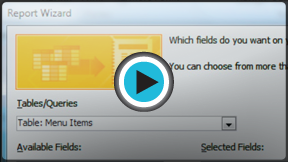Access 2010
Advanced Report Options
The Report Wizard
While using the Report command is a quick way to create reports from the current object, it's not as helpful if you want to create a report with data from multiple objects. The Report Wizard makes it easy to create reports using fields from multiple tables or queries. It even lets you choose how your data will be organized.
To Create a Report using the Report Wizard:
- Select the Create tab and locate the Reports group. Click the Report Wizard command.
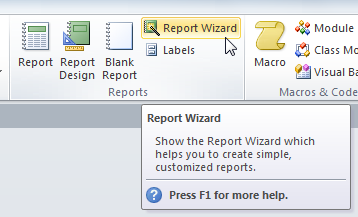 The Report Wizard command
The Report Wizard command - The Report Wizard dialog box will appear.
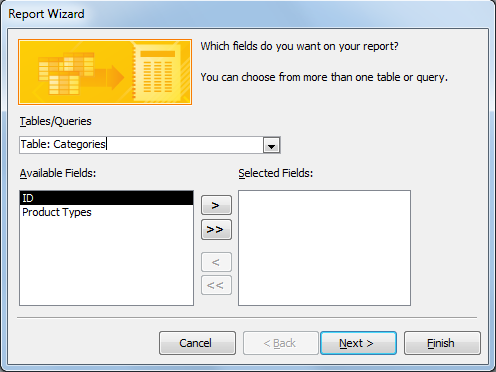 The Report Wizard dialog box
The Report Wizard dialog box
Step 1: Select the Fields to Include in your Report
- Click the drop-down arrow to select the table or query that contains the desired field or fields.
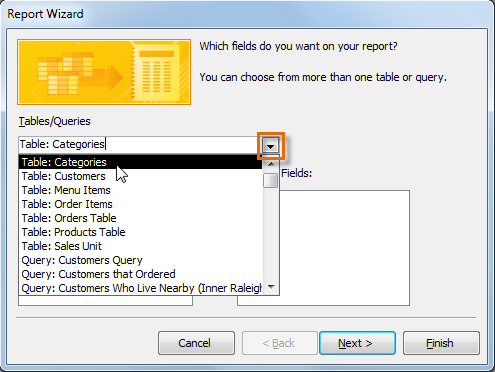 Selecting a table that contains fields to include in the report
Selecting a table that contains fields to include in the report - Select a field from the list on the left, and click the right arrow
 to add it to the report.
to add it to the report.
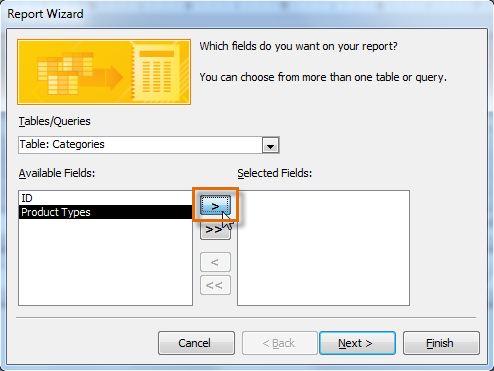 Adding fields to a report
Adding fields to a report - You can add fields from more than one table or query by repeating the above steps. Once you've added the desired fields, click Next.
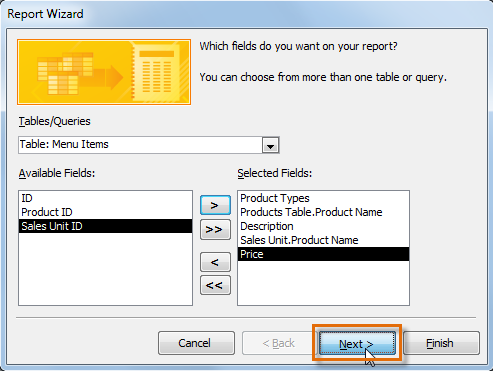 The added fields
The added fields
Step 2: Organize the Report
The Report Wizard will provide you with options that let you choose how to view and organize your data. These options group like data within your fields and organize those fields into multiple levels, like in an outline or bulleted list.
If you are building a report from only one table or query, you can skip to No. 3 in this section.
- Access will offer a list of several organization options. Select an option from the list to preview it.
 Grouping options
Grouping options - Click Next when you are satisfied with the basic organization of your data.
- If you're not satisfied with the way your data is organized, you can now modify the grouping levels.
- Select a field from the list, and click the right arrow
 to add it as a new level.
to add it as a new level.
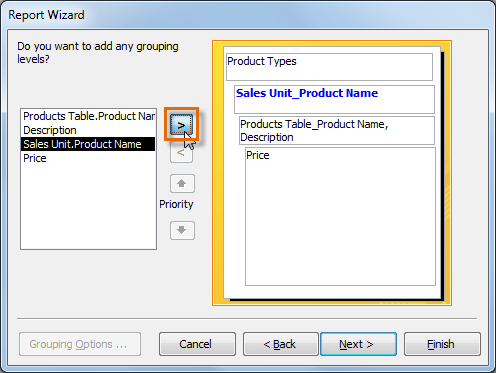 Adding a new grouped level
Adding a new grouped level - If necessary, modify the order of your grouped fields by selecting a field and clicking the up or down Priority arrow to move it up or down a level.
 Moving the Sales Unit field down a grouping level
Moving the Sales Unit field down a grouping level
- Select a field from the list, and click the right arrow
- Once you are satisfied with the organization of your report, click Next.
Step 3: Sort Your Report Data
- Click the top drop-down arrow, and select the name of the first field you wish to sort.
- Click the button on the right to change the sort to ascending or descending.
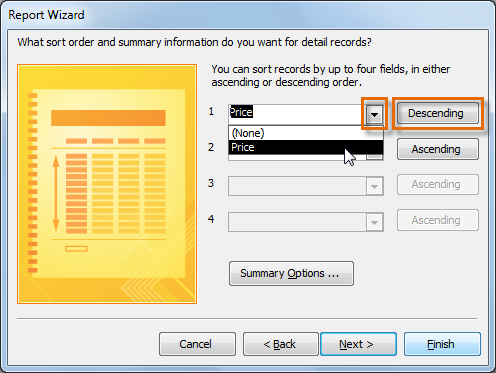 Sorting the report
Sorting the report - Add any additional sorts. You may sort up to four fields. The sort will be applied from top to bottom, meaning that the sort at the top of the list will be the main sort.
- When you are satisfied with the way your data is sorted, click Next.
Depending on the grouping you have chosen for your data, your sorting options may be limited.
Step 4: Select a Layout and Title
- Click the various layout options to see how they look, then select one to use in your report.
- Select either a portrait (tall) or landscape (wide) orientation for your report.
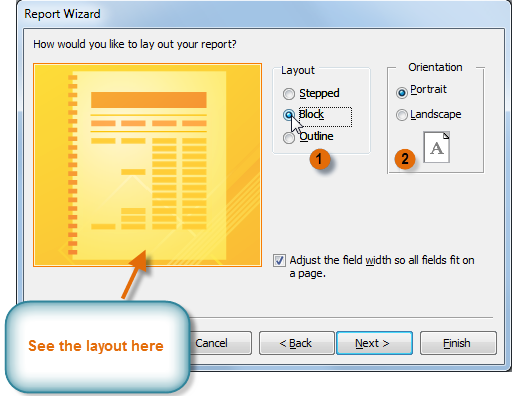 Setting the report layout
Setting the report layout - Once you are satisfied with your report layout, click Next.
- Place your cursor in the text box and type the title you would like for your report.
- Select whether you want to preview the report or modify its design, then click Finish.
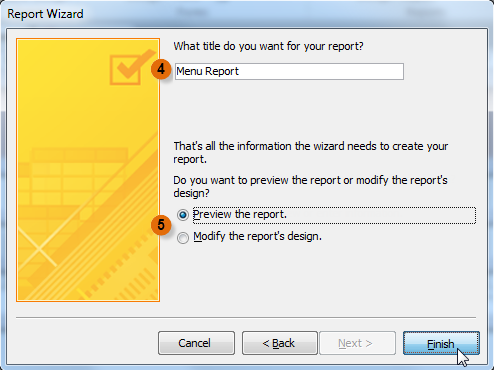 Finishing the report
Finishing the report - Your report will be created and saved.
Just as with other reports, you may have to adjust your field and row size and location to make sure that all your data fits the way you want it to.



